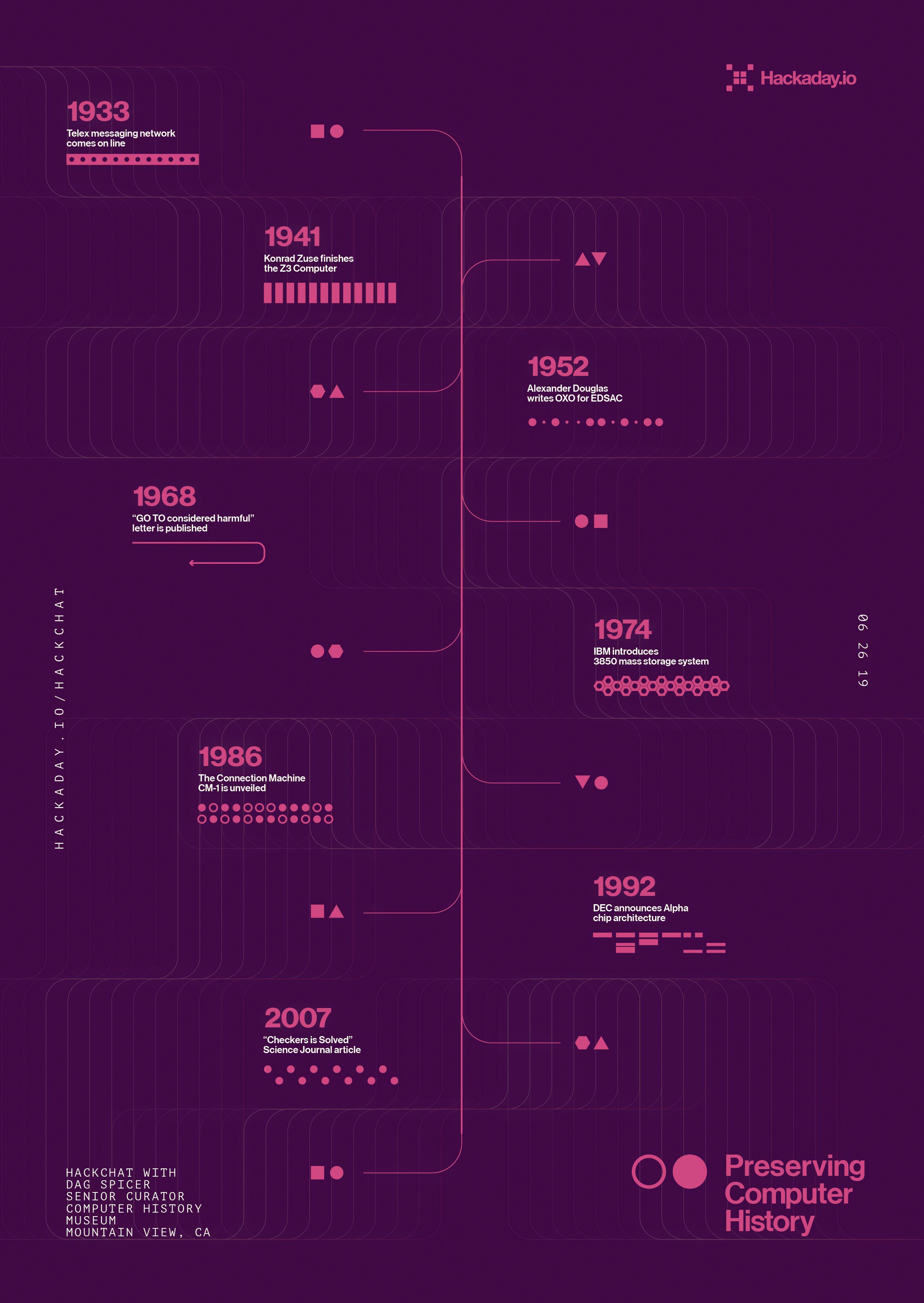Dag Spicer will host the Hack Chat on Wednesday, June 26, 2019 at noon Pacific time.
Time zones got you down? Here's a handy time converter!
 In our age of instant access to the seeming total of human knowledge at the swipe of a finger, museums may seem a little out of place. But the information available at our fingertips is often only the tip of the iceberg, and institutions like the Computer History Museum in Mountain View, California are dedicated to collecting and preserving the artifacts of the information age, and perhaps more importantly, providing context and making everything accessible.
In our age of instant access to the seeming total of human knowledge at the swipe of a finger, museums may seem a little out of place. But the information available at our fingertips is often only the tip of the iceberg, and institutions like the Computer History Museum in Mountain View, California are dedicated to collecting and preserving the artifacts of the information age, and perhaps more importantly, providing context and making everything accessible.
The CHM is an incredible resource for anyone doing research involving the early days of computing. Dag Spicer is the Senior Curator at CHM, or "Chief Content Officer" as he likes to put it. Dag has been collecting, cataloging, and overseeing the largest collection of computer artifacts in the world for almost 25 years, and he has some stories to tell. He'll stop by the Hack Chat this week to share them, and to answer your questions about the history of computers and how studying the past shapes the future of computing.







 Yeah, same way for me at the Living Computer Museum in Seattle. I couldn't believe how many times I walked past a display and said, "Had that one too." My kids were appalled at both my nerdliness and my age.
Yeah, same way for me at the Living Computer Museum in Seattle. I couldn't believe how many times I walked past a display and said, "Had that one too." My kids were appalled at both my nerdliness and my age.




I am very glad to see your good post. its so nice and informative. are you interested in website of e commerce visit here: https://karamage.com/